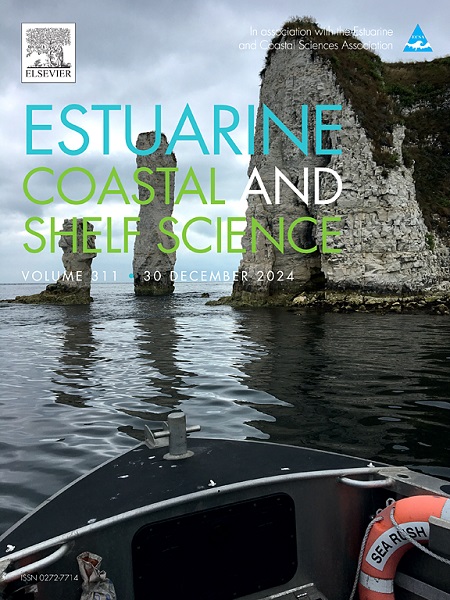Sexual reproduction underlies the bloom dynamics of toxicogenic diatoms of the genus Pseudo-nitzschia H. Peragalo
IF 2.6
3区 地球科学
Q1 MARINE & FRESHWATER BIOLOGY
引用次数: 0
Abstract
Over six years (from March 2018 to the present), representatives of the genus Pseudo-nitzschia have been monitored in the waters of the Karadag Biological Station (44. 91 N, 35. 20 E). The data obtained indicate a periodic increase in the abundance of representatives of the genus in spring and autumn. During the early spring periods of 2021 and 2024, the number of cells in the population increased sharply. The potentially harmful Pseudo-nitzschia calliantha Lundholm, Moestrup et Hasle was continuously present and was dominant during bloom periods. Before this period, the relative number of small, reproductively potent cells increases in the population that enhances the probability of meeting sexual partners and facilitates fusion of gametes during sexual reproduction. Mass development up to phenomenon known as "blooms" is thus caused by the need for sexual reproduction in populations of P. calliantha. During the blooms, a redistribution of cell sizes was observed with the gradual disappearance of smaller cells and the appearance of larger ones, resulting from sexual reproduction, the size of which approached the maximum species-specific size. An increase in the sexually effective proportion of the population may predict bloom occurrence. We hypothesize that a sharp increase in cell numbers associated with sexual reproduction is a trait shared by all representatives of Pseudo-nitzschia.
有性繁殖是伪尼齐亚H. Peragalo属有毒硅藻的开花动力学的基础
六年多来(从2018年3月至今),在卡拉达格生物站的水域监测了伪尼齐亚属的代表。91 n, 35。20 E)。所获得的数据表明,在春季和秋季,该属代表的丰度呈周期性增加。在2021年和2024年的早春期间,种群中的细胞数量急剧增加。具有潜在危害的calliantha pseudonitzschia Lundholm、Moestrup和Hasle在花期持续存在并占主导地位。在此之前,种群中具有繁殖能力的小细胞的相对数量增加,这增加了与性伴侣相遇的可能性,并促进了有性生殖过程中配子的融合。因此,大量发育直至所谓的“开花”现象是由P. calliantha种群有性繁殖的需要引起的。在开花期间,观察到细胞大小的重新分配,小细胞逐渐消失,大细胞出现,这是有性繁殖的结果,其大小接近物种特有的最大大小。人口中性有效比例的增加可以预测花华的发生。我们假设,与有性生殖相关的细胞数量急剧增加是所有伪nitzschia代表所共有的特征。
本文章由计算机程序翻译,如有差异,请以英文原文为准。
求助全文
约1分钟内获得全文
求助全文
来源期刊
CiteScore
5.60
自引率
7.10%
发文量
374
审稿时长
9 months
期刊介绍:
Estuarine, Coastal and Shelf Science is an international multidisciplinary journal devoted to the analysis of saline water phenomena ranging from the outer edge of the continental shelf to the upper limits of the tidal zone. The journal provides a unique forum, unifying the multidisciplinary approaches to the study of the oceanography of estuaries, coastal zones, and continental shelf seas. It features original research papers, review papers and short communications treating such disciplines as zoology, botany, geology, sedimentology, physical oceanography.

 求助内容:
求助内容: 应助结果提醒方式:
应助结果提醒方式:


